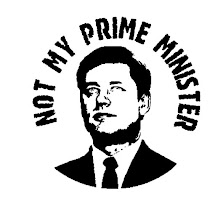Omar El Akkad, Globe and Mail, Wednesday Oct 15, 2008
OTTAWA — One of the lowest voter turnouts in Canadian history began to take shape late last night as voters across the country expressed anger at new voter-identification rules that left some Canadians unable to cast a ballot.
Although it is too early to tell exactly what percentage of the roughly 23 million eligible voters cast their ballots in this election, the numbers hovered about 60 per cent. If that percentage is correct, it would be a historic low.
Turnout has been steadily declining over the past 50 years, dropping from almost 80 per cent in the early sixties to between 60 and 65 per cent in the past few elections.
Tuesday marked the first election since Parliament passed a law last year requiring potential voters to present ID showing their name and address.
Although Elections Canada spent millions of dollars advertising the new rules, it became clear Tuesday that many people who showed up at polling stations across the country only with identification such as passports were not aware of or did not understand the new rules.
"They denied me the right to vote," Lawrence Oshanek complained after being turned away from a polling booth in Calgary.
Mr. Oshanek has lived in Calgary for years, but has no fixed address. The identification he produced and the statutory declaration was not enough, Elections Canada told the local elections officials, he said.
Elections Canada rules allowed three options for potential voters.
They could present a piece of ID with their photo, name and address; they could also present two pieces of ID, at least one of which had an address. Voters could also swear an oath, as long as they had another valid voter from the same polling district vouch for them.
But some Canadians complained that the new address requirements disproportionately alienated younger voters, who may move from house to house more often, or live for periods of time with their parents.
Rick Salay's 21-year-old son and 25-year-old daughter both tried to vote in Toronto Tuesday using their voter identification cards and passports. Mr. Salay said his children were told that wasn't enough. His son managed to find a piece of mail with his address, and could vote; his daughter did not, and couldn't vote.
"It just seems ludicrous to me that with those two pieces of ID [voter registration card and passport], it's still not enough," Mr. Salay said.
"A passport is good enough to get them out of the country."
Elections Canada officials acknowledged some anecdotal problems with the new ID requirements, which first surfaced during advance polls earlier in the election campaign, but described the issues as relatively minor.
With a report from Dawn Walton in Calgary
Subscribe to:
Post Comments (Atom)

No comments:
Post a Comment